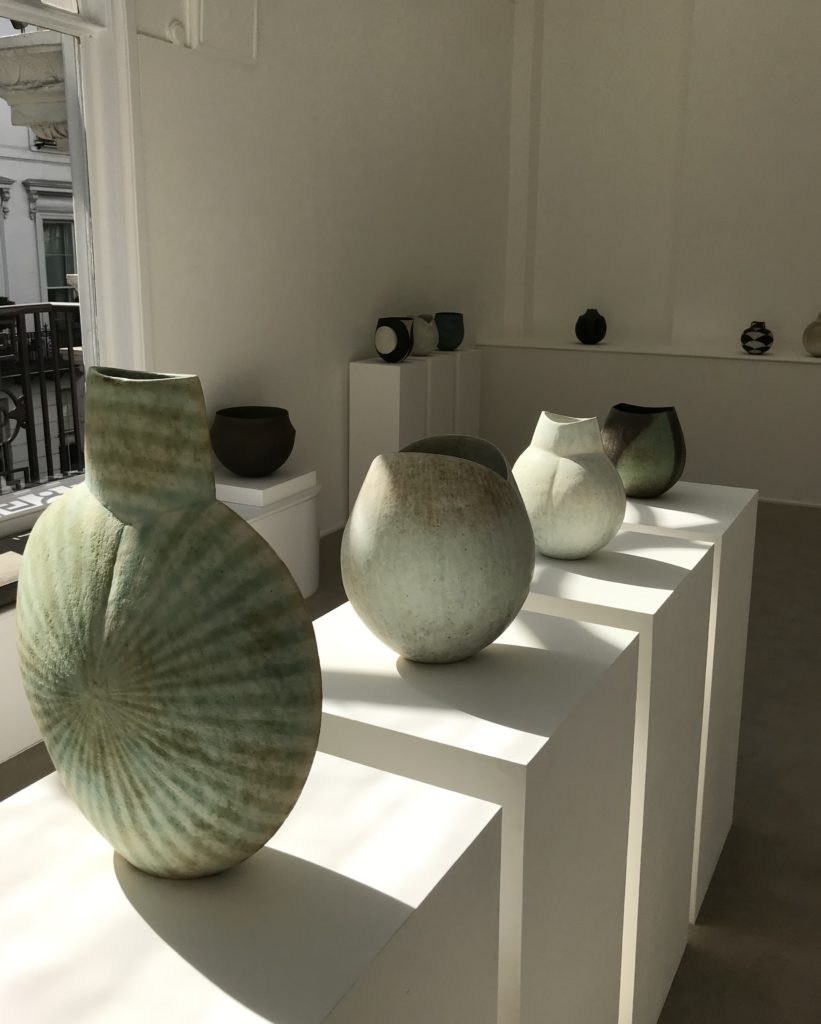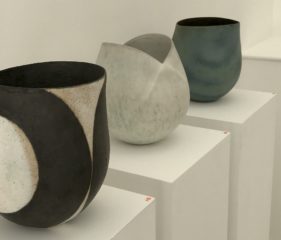John Ward pottery exhibition at the Erskin, Hall & Coe Gallery in London
John Ward is regarded as one of Britain’s most important modern potters. He is also one of my personal favourites. There isn’t probably a contemporary pottery and ceramics book that doesn’t mention his name.
He was born in 1938 in London. He studied at the Camberwell School of Arts & Crafts under Hans Coper and Lucie Rie. In 1971 he set up his London workshop, whilst still teaching pottery. Finally, in 1979 he moved to Wales and focuses solely on making pots.
working method
John handbuilds most of his pieces. He starts with pinching out a base and and then adds coils of clay to shape a hollow vessel. He alters and shapes them at leatherhard stage, creating ridges or grooves between curved surfaces. To finish them off, he scrapes and partly burnishes them with a stone.
Ward uses mainly matt glazes, which he applies either by pouring, spraying or painting. He fires his work twice, in an electric kiln.
Ward’s ceramics is widely exhibited, including the collection of the Victoria and Albert Museum, Birmingham Museum & Art Gallery, National Museum of Wales, Fitzwilliam Museum.
What particularly appeals to me about John Ward’s style is the simplicity of both form and decoration, playfulness and texture. His pottery has this particular quiet but yet powerful elegance and subtlety. You can see clear reference to ancient Chinese and Egyptian pottery, as well as work of more contemporary studio ceramicists such as Hans Coper, Lucie Rie and Ian Godfrey.
John Ward sculptural stoneware vessels are distinguished for their simple yet sometimes complex structures. Similarly for their minimalist abstract and geometric decoration. There is a beautiful balance between dynamic form and a sense of stillness.
In his own words, it is not surprising that the colours he’s using (white, green, blue) are reflection of the surface colours and textures of where he’s living. Rocks, sea.
My favourite pieces are certainly his black and white vessels, as this is actually how I first became to know his work. But I also love all the shades of organic and subtle greens, off white and orche.




